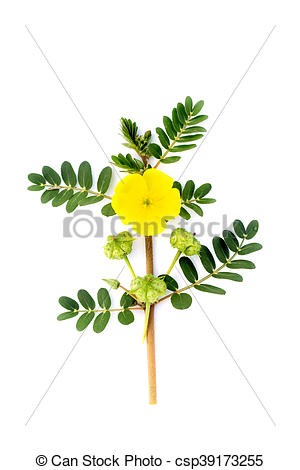"Puncture vine "
(Kallstroemia maxima)

Description
Tribulus terrestris is an annual plant in the caltrop family (Zygophyllaceae) widely distributed around the world. It is adapted to grow in dry climate locations in which few other plants can survive. It is native to warm temperate and tropical regions in southern Eurasia and Africa. It has been unintentionally introduced to North America and Australia. An aggressive and hardy invasive species, T. terrestris is widely known as a noxious weed because of its small woody fruit – the bur having long sharp and strong spines which easily penetrate surfaces, such as bare feet or thin shoes of crop workers and other pedestrians, the rubber of bicycle tires, and the mouths and skin of grazing animals. Like many weedy species, this plant has numerous common names according to the world region, including goat's-head, bindii, bullhead, burra gokharu, bhakhdi, caltrop, small caltrops, cat's-head, devil's eyelashes, devil's-thorn, devil's-weed, puncture vine, and tackweed. Tribulus terrestris is a taprooted herbaceous plant that grows as a summer annual in temperate climates. The stems radiate from the crown to a diameter of about 10 cm (3.9 in) to over 1 m (3 ft 3 in), often branching. They are usually prostrate, forming flat patches, though they may grow more upwards in shade or among taller plants. Stems branch from the crown and are densely hairy. Leaves are opposite and pinnately compound. Densely hairy leaflets are opposite and up to 3 mm (0.12 in) long. The flowers are 4–10 mm (0.16–0.39 in) wide, with five lemon-yellow petals, five sepals, and ten stamens. In Southern California, it blooms from April through October, where it is highly invasive in waste places and disturbed sites. After the flower blooms, a fruit develops that easily falls apart into five burs. The burs are hard and bear two to four sharp spines, 10 mm (0.39 in) long and 4–6 mm (0.16–0.24 in) broad point-to-point. These burs strikingly resemble goats' or bulls' heads, characteristics which give the bur its common names in some regions. The "horns" are sharp enough to puncture bicycle tires and other air-filled tires. They can also cause painful injury to bare feet and can injure the mouths of livestock grazing on the plant. Within each bur, seeds are stacked on top of each other, separated by a hard membrane. As an adaptation to dry climates, the largest seed germinates first, while the others may wait until more moisture is available before germinating.
Taxonomic tree:







